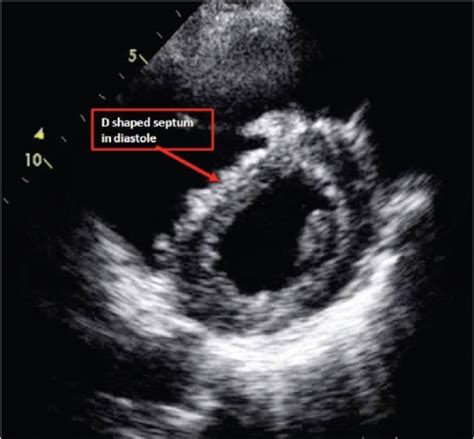d shaped septum ,septal wall motion abnormality,d shaped septum, Typically at end-systole, the interventricular septum (IVS) bows rightward as the left ventricle’s pressure (LV) exceeds that of the right ventricle (RV). LOVE ring, yellow gold (750/1000). Width: 5.5 mm (for size 52). Please note that .

Introduction
In patients with right ventricular pressure overload, there is a significant elevation of pressure in the right ventricle throughout systole and diastole. This abnormal pressure distribution can have profound effects on the interventricular septum, leading to a phenomenon known as a "D shaped septum." Understanding the implications of d shaped septal flattening and abnormal septal motion is crucial for clinicians managing patients with right ventricular pressure overload. In this article, we will explore the causes, consequences, and management of d shaped septum in patients with right ventricular pressure overload.
D Shaped Septal Flattening
D shaped septal flattening refers to the abnormal shape of the interventricular septum that occurs in response to increased pressure in the right ventricle. In a healthy heart, the septum maintains a curved shape, allowing for efficient coordination of left and right ventricular function. However, in the presence of right ventricular pressure overload, the increased pressure in the right ventricle can cause the septum to flatten, resulting in a D shaped appearance on imaging studies.
The flattening of the interventricular septum is a manifestation of the mechanical forces exerted by the right ventricle on the septum during both systole and diastole. This abnormal septal motion can have significant implications for left ventricular function and overall cardiac performance in patients with right ventricular pressure overload.
Is Abnormal Septal Motion Dangerous?
Abnormal septal motion, such as d shaped septal flattening, can have detrimental effects on cardiac function and overall hemodynamics. The altered shape of the septum can impede left ventricular filling and lead to impaired systolic function. Additionally, the abnormal septal motion can disrupt the normal interaction between the left and right ventricles, further compromising cardiac output.
In patients with right ventricular pressure overload, d shaped septal flattening is a sign of advanced disease and may indicate a poor prognosis. It is essential for clinicians to recognize and address abnormal septal motion early to prevent further deterioration of cardiac function and hemodynamics.
D Shaped Septum in Systole
During systole, the right ventricle contracts to pump blood into the pulmonary circulation. In patients with right ventricular pressure overload, the increased pressure in the right ventricle can cause the septum to bow into the left ventricle, resulting in a D shaped septum. This abnormal septal motion can impede left ventricular ejection and lead to decreased cardiac output.
The presence of a D shaped septum in systole is a characteristic finding in patients with right ventricular pressure overload and is indicative of the mechanical forces exerted by the right ventricle on the septum. Clinicians should be vigilant in identifying this abnormal septal motion on imaging studies to guide appropriate management strategies.
Abnormal Septal Wall Motion Meaning
Abnormal septal wall motion, such as d shaped septal flattening, signifies the impact of right ventricular pressure overload on the interventricular septum. The abnormal shape and motion of the septum can disrupt normal cardiac function and hemodynamics, leading to impaired systolic and diastolic performance.
The presence of abnormal septal wall motion is a critical finding in patients with right ventricular pressure overload and should prompt further evaluation and management. Understanding the meaning of abnormal septal motion is essential for optimizing patient outcomes and preventing complications associated with d shaped septum.
Flattening of the Interventricular Septum
The flattening of the interventricular septum is a hallmark feature of d shaped septum in patients with right ventricular pressure overload. This abnormal septal motion is a result of the increased pressure in the right ventricle, which causes the septum to bow into the left ventricle during both systole and diastole.
The flattening of the interventricular septum can lead to hemodynamic compromise and impaired cardiac function. Clinicians should be aware of this characteristic finding on imaging studies and consider it in the context of overall patient management.
Apical Septal Wall Motion Abnormality
Apical septal wall motion abnormality refers to the impaired motion of the septum at the apex of the heart. In patients with right ventricular pressure overload, the increased pressure in the right ventricle can affect the motion of the septum, leading to abnormalities in contraction and relaxation.
The presence of apical septal wall motion abnormality is often associated with d shaped septum and can have significant implications for cardiac function. Clinicians should assess for this abnormality on imaging studies and consider its impact on overall patient management.

d shaped septum $6,995.00
d shaped septum - septal wall motion abnormality